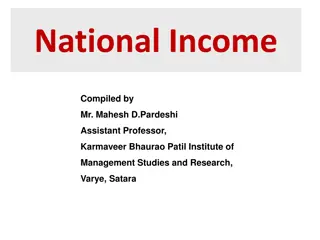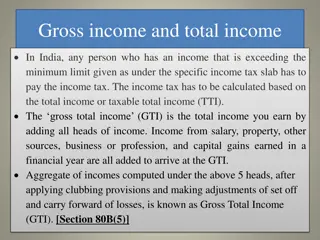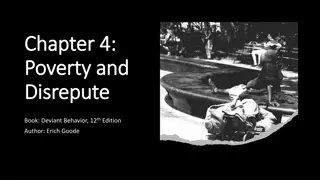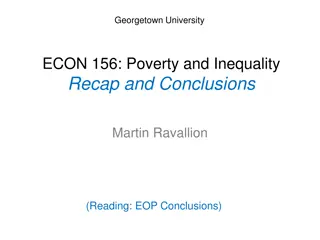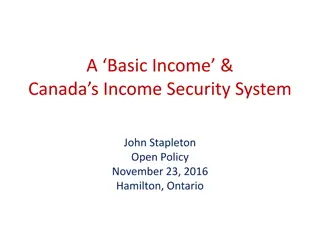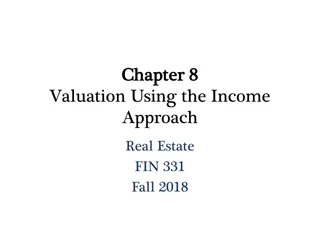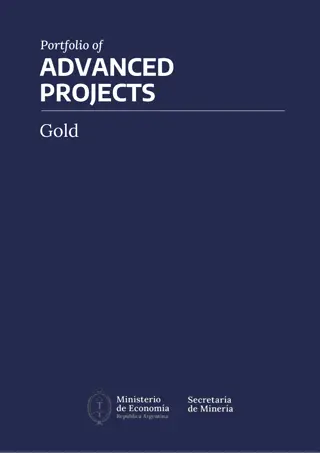Understanding Time Poverty and Income Poverty in Argentina
Measuring unpaid care and domestic work (UCDW) is crucial in assessing gender, time, and income poverty in Argentina. The Levy Institute Measure of Time and Income Poverty (LIMTIP) combines income and UCDW time requirements to determine poverty levels. Time deficits, when not compensated for, can lead to hardships for individuals and households, especially when coupled with income poverty. Official poverty and LIMTIP rates from Buenos Aires highlight the significance of considering time deficits in poverty measurements.
Download Presentation

Please find below an Image/Link to download the presentation.
The content on the website is provided AS IS for your information and personal use only. It may not be sold, licensed, or shared on other websites without obtaining consent from the author. Download presentation by click this link. If you encounter any issues during the download, it is possible that the publisher has removed the file from their server.
E N D
Presentation Transcript
Gender, Time and Income Poverty in Argentina Why measuring unpaid care and domestic work (UCDW)? Macroeconomic measures, like the extended income measure have treated UCDW as an additional source of income. Similarly, the economic welfare of households and persons depends on their income and on the UCDW. Absolute income poverty is traditionally defined as lacking some minimum level of income to satisfy basic needs. We call lacking a minimum level of UCDW time poverty. The Levy Institute Measure of Time and Income Poverty (LIMTIP) combines the two dimensions. Valeria Esquivel
LIMTIP measure 1st Similar to a minimum amount of income that secures access to a basic basket of goods and services available in the markets, and minimum amount of UCDW time is equally necessary to actually survive with an income around the official poverty line. This is the poverty-level time requirement , calculated at the household level and depending on household structure. 2nd When the sum of an individual s weekly hours of (i) minimum required personal care, (ii) hours in employment, and (iii) the portion of the poverty-level UCDW time requirement that falls upon the individual exceed the total amount of hours in a week (168 hours), the individual runs time deficits and is time poor. Household time-deficits are calculated as the sum of household adult members time deficits without allowing for these deficits to be compensated for by the time surplus of another individual of the same household. Valeria Esquivel
LIMTIP measure 3rd When household time deficits exist, they are monetized and added to the standard income poverty line. If the time-deficient household does not have sufficient income at its disposal to buy the poverty-level consumption basket plus market substitutes for its time deficit, then the household, and all its members, are facing a poverty-inducing time deficit. The LIMTIP measure reveals that time poverty, especially when coupled with income poverty, imposes hardships on the adults who are time-poor as well as their dependents, particularly the children, elderly, and sick. Income poverty alone does not convey enough useful information about their deprivation. Valeria Esquivel
Official poverty and LIMTIP in Buenos Aires (2005) Official LIMTIP 28 16 16 13 12 9 7 7 Source: Antonopoulos, Rania, Valeria Esquivel, Thomas Masterson, and Ajit Zacharias. 2016. Measuring Poverty in the Case of Buenos Aires: Why time deficits matter. Levy Economics Institute Working Paper No. 865. Men Women Children All Valeria Esquivel
Official poverty and LIMTIP in Buenos Aires (2005) Rates of income poverty, and time poverty incidence, of individuals by occupational status (percent) Income Poverty Time Poverty Time Poverty LIMTIP Poor LIMTIP Non-Poor Non- Non- Official LIMTIP Employed All Employed All employed employed 58 5 41 35 4 29 Men 7 13 (39) (2) (41) (28) (1) (29) (contribution) Source: Antonopoulos, Rania, Valeria Esquivel, Thomas Masterson, and Ajit Zacharias. 2016. Measuring Poverty in the Case of Buenos Aires: Why time deficits matter. Levy Economics Institute Working Paper No. 865. 62 16 39 45 9 31 Women 7 12 (31) (8) (39) (28) (3) (31) (contribution) 16 28 84 80 Children under 18 Valeria Esquivel
Official poverty and LIMTIP in Buenos Aires (2005) Rates of income poverty of households, and time poverty incidence, by type of family (percent) Income Poverty Time Poverty LIMTIP LIMTIP Official LIMTIP All Poor Non-Poor 70 49 52 All households 6.2 11.1 5 17 17 Nonfamily households 2.2 2.3 74 61 63 Family households 7.5 13.9 79 63 65 Married couple 6.9 13.2 Source: Antonopoulos, Rania, Valeria Esquivel, Thomas Masterson, and Ajit Zacharias. 2016. Measuring Poverty in the Case of Buenos Aires: Why time deficits matter. Levy Economics Institute Working Paper No. 865. 59 58 59 Single female head 9.7 16.2 11.6 22.6 81 76 77 Family households with children under 18 9.7 20.8 89 80 82 Married couple 17.2 27.0 63 72 69 Single female head Valeria Esquivel
Official poverty and LIMTIP in Buenos Aires (2005) Official and LIMTIP income poverty and time poverty rates for households and individuals, actual and simulated Actual Simulation Income Poverty Time Poverty Income Poverty Time Poverty LIMTIP LIMTIP LIMTIP LIMTIP Official LIMTIP Poor Nonpoor Official LIMTIP Poor Nonpoor Households 6 11 70 49 1 6 94 61 Persons 9 16 2 10 Source: Antonopoulos, Rania, Valeria Esquivel, Thomas Masterson, and Ajit Zacharias. 2016. Measuring Poverty in the Case of Buenos Aires: Why time deficits matter. Levy Economics Institute Working Paper No. 865. Men 7 13 41 29 2 7 52 35 Women 7 12 39 31 1 7 72 45 Children 16 28 84 80 5 19 97 92 Valeria Esquivel
Interlocking domains of deprivation Labor market Gender norms Social protection Household demographics Prevalence of maternalism in childcare; household production as women s (and families ) responsibility. Insufficient access to State-provided care services. Valeria Esquivel



